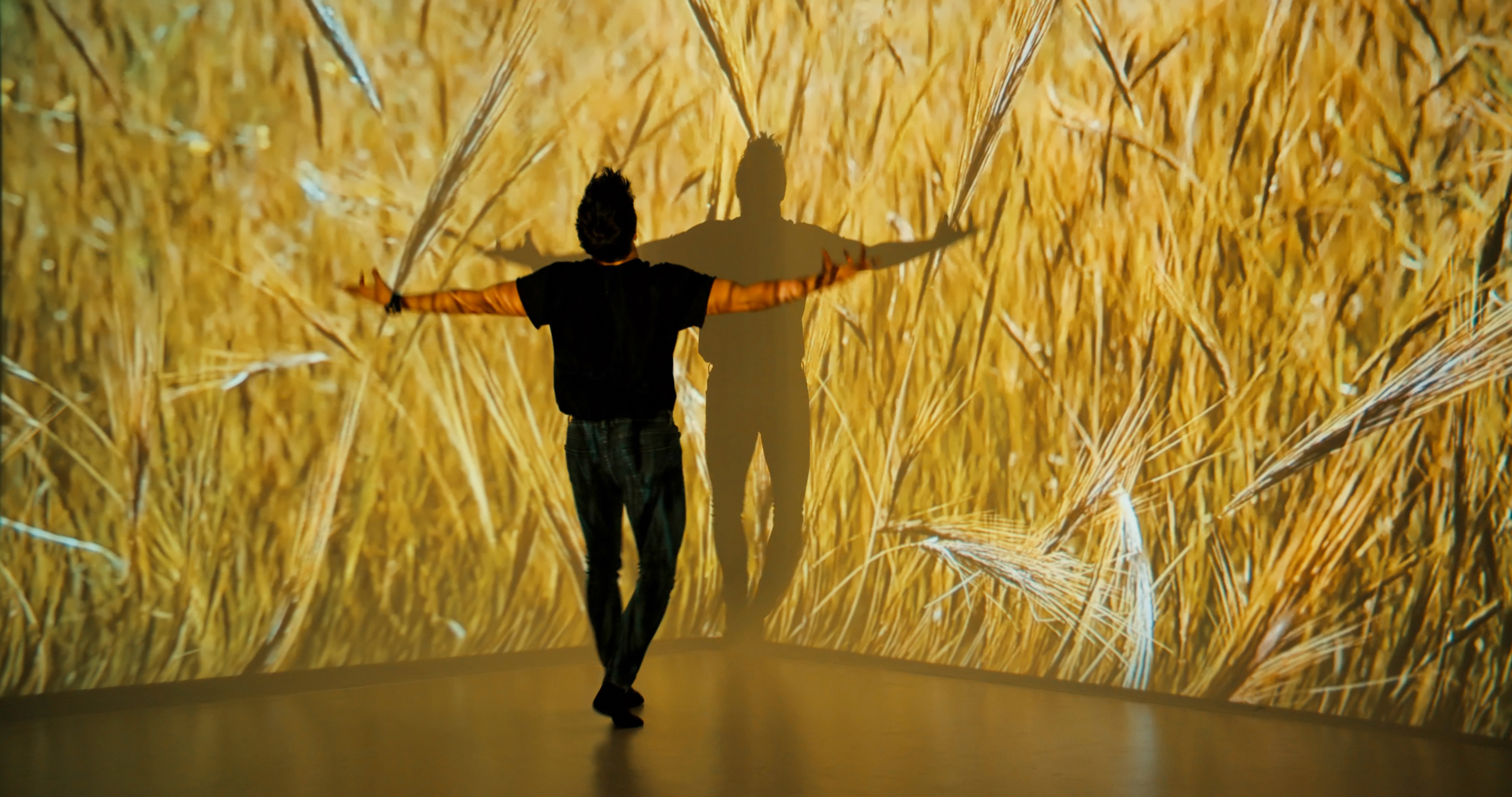February 3, 2020
3 min read
We’re experiencing the golden age of projection mapping. Its ability to turn surfaces found in our everyday lives — specifically non-flat or non-white surfaces — into immersive and captivating experiences can transport audiences to another world.
Some of the largest venues and events are already creating unforgettable visual experiences. For instance, Madison Square Garden has turned to projection technology, delighting fans as their home teams take the floor or with reimagined halftime shows, while the Game of Thrones season 7 premiere party used projection to take guests to King's Landing with backdrops of the show’s iconic imagery, Weirwood trees and fire-breathing dragons. From live concerts and sports arenas to art festivals and beyond, production designers and creative teams alike are using projection mapping to bring large scale events to the next level.
But what makes projection mapping the right choice for your event over more traditional techniques?
Why Choose Projection Mapping?
The versatility and reliability of projection mapping have proven to be unrivaled. Rather than adapting your creative vision to fit the landscape, projection technology can project images that display seamlessly on irregularly shaped surfaces, whether on the outside of a building, natural surroundings or other unique objects. Its adaptability opens the doors for unparalleled innovation and creativity, enabling the audience to experience that “wow-factor” firsthand. Additionally, projection mapping can deliver unconventional visuals, and when paired with corresponding audio, the simulated environment can transport audiences to another world, ultimately creating fully immersive experiences and showing just how powerful art can be as it tells a story.
With long lasting and reliable operation, projection mapping tends to be an ideal choice for large-scale events – like sports arenas, theaters and much more. While many of these venues need continued use of the technology, and may even need to adapt the visuals from one event to another, it’s imperative that the technology withstand many hours of usage and that the projected content be easily interchangeable. In the longer term, this makes projection mapping a more cost-effective solution when compared to the pricing of different equipment and props purchased for various events. By deploying Panasonic’s projection mapping technology, you’re able to transform venues and elevate experiences for guests and audiences everywhere. Here’s how:
1. Project Images on Non-Traditional Surfaces
Panasonic’s laser projectors were essential in transforming the urban landscape of Downtown Binghamton, New York, into a storytelling experience during LUMA. The premier projection mapping festival transformed well-known buildings around Binghamton into state-of-the-art immersive displays, created by artists, creative designers, and other mixed-media professionals. Our projection technology enabled artists to treat the downtown area as their canvas, and was essential for guests to feel as if they had stepped into another world. Because of projection mapping, visitors saw familiar landmarks and well-known monuments turn into new imaginings.
2. Create an Immersive Experience with Unconventional Visuals
What’s incredibly unique about projection mapping is its ability to deliver unconventional visuals, resulting in fully immersive experiences. Denver Botanic Gardens — a public botanical garden that contains a conservatory, a variety of themed gardens and a sunken amphitheater — collaborated with Panasonic to transform the Gardens into their annual winter event, Blossoms of Light™.
In a space that was primarily known for visitors during warmer months, projection mapping proved essential to elevating imagery in the offseason. Incorporating this technology into the displays enabled guests to connect with designs and collections that are usually only visible during daylight. The space was transformed to transport thousands of visitors into a winter wonderland, where they could stroll through pathways and experience the immersive displays of light and color throughout.
3. Ensure a Reliable and Continual Experience
From the Super Bowl to the Olympic Games, projection mapping is used on some of the largest stages in the world due to the longevity and reliability of the technology. Because of its unique capabilities, Panasonic installed its real-time tracking and projection mapping compatible projector to bring the video performance during the 2020 Tokyo Olympics’ "One Year to Go" Ceremony to new heights. With a global audience, it was imperative that the video play without a hitch. Panasonic will turn to projection technology yet again for the 2020 Tokyo Olympics’ opening ceremony, and is looking forward to creating another one of a kind entertainment experience for the world to see.
Craft Unforgettable Live Events with Projection Mapping
These are only three reasons you should consider projection mapping technology to bring your vision to life. As AV technology continues to evolve, more creative visionaries will choose this technology to set large-scale events apart from the rest. Considering these capabilities, you can rest assured that your audiences and guests will be captivated by the capabilities of the technology when average venues are transformed into breathtaking experiences.
